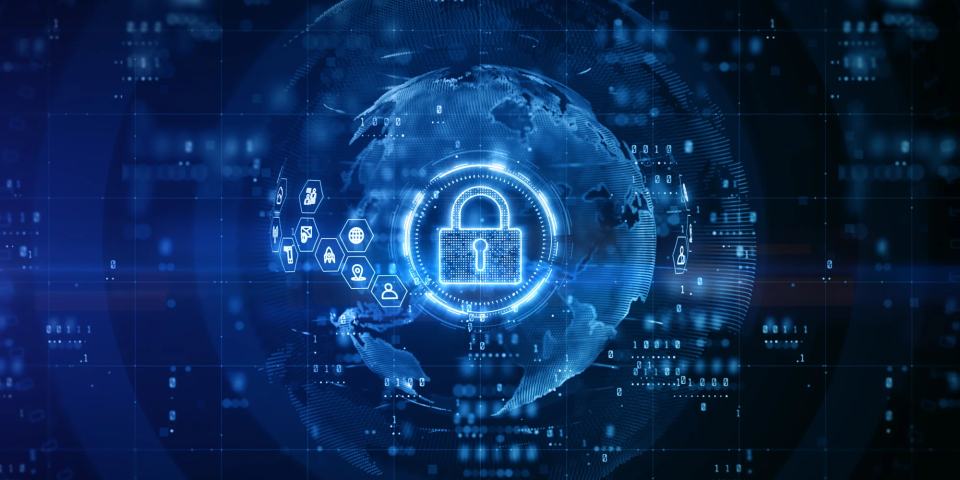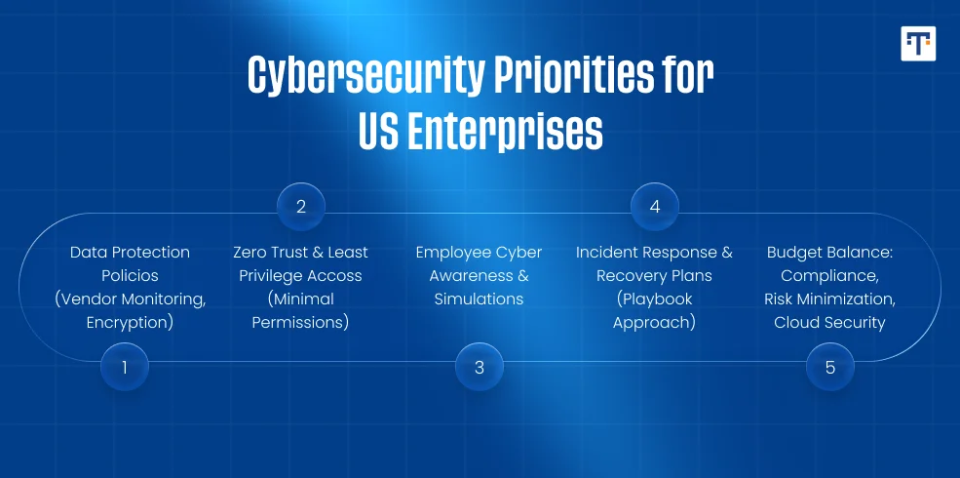Necessary Always Active
Necessary cookies are required to enable the basic features of this site, such as providing secure log-in or adjusting your consent preferences. These cookies do not store any personally identifiable data.
|
||||||
|
||||||
|
||||||
|

As Cybersecurity Awareness Month approaches in October, there is a renewed focus on developing effective cybersecurity strategies for enterprises. This year’s theme will re-emphasize some commonly discussed security tips that business leaders should already know. These include using strong passwords, activating multi-factor authentication, regularly updating software, and recognizing and reporting scams.
They are not new topics, but important periodic discussions to remind ourselves of the constant threat to sensitive data of organizations and individuals. This guide elaborates on the priorities of B2B leaders for US enterprises in incorporating top cybersecurity strategies.
The 2025 theme for Cybersecurity Awareness Month is “Secure Our World” with the action message “Stay Safe Online”. A simple, effective, and powerful slogan for enterprises and frequent users of the online space and cloud computing technologies.
The Cybersecurity & Infrastructure Security Agency (CISA) has provided resources for this year’s awareness programs. Some key highlights to expect include:
Scammers continue to develop new strategies through deepfake technology and advanced social engineering. There have also been updated data privacy Acts with strict compliance requirements. The following reasons explain why addressing these cybersecurity threats and regulations is a priority for B2B leaders:

Cybersecurity remains a crucial topic, especially with recent hacks such as the Oracle Cloud’s SSO platform incident. A ‘rose87168’ uploaded millions of the company’s data for sale on BreachForums, which Oracle later admitted to being breached through an old system last used in 2017.
Another cyber scam in 2025 was the infiltration of Allianz Life Insurance Company systems through a vulnerable third-party vendor. These recent cases explain why B2B leaders must prioritize cybersecurity in Q4 2025, especially with possible risks from old connected systems and supply chain risks.
It is important to ensure compliance with standard B2B data protection policies, such as those of the Securities and Exchange Commission (SEC). The SEC’s regulations emphasize that cybersecurity risk management should be treated as a governance and investor confidence issue, and not just an internal IT problem.
This is not a surprise since the motive of cybercriminals is not always money, but sensitive information to create fake identities, blackmail, and commit bigger fraud. As a further response from the government, there have been emerging state-level data privacy laws in places like Delaware, Tennessee, and Maryland, added to existing ones. Note that compliance could be tricky when operating across multiple states.
The ripple effects of a cybersecurity breach often extend beyond data loss. Hypothetically, a significant breach into Google’s architecture and search engine data would cause reputational damage that would dominate headlines and erode consumers’ trust.
We can similarly assess reputational damage as in the case of Allianz Life Insurance, a global financial services group, where sensitive customer data, such as SSN, was stored in Salesforce systems and exposed. An affected B2B company can also suffer downtime. For example, United Natural Foods Inc. (UNFI), a major supplier to Whole Foods and other U.S. retailers, was forced to take systems offline after a cyberattack disrupted its operations.
Knowledge about cyber scams in 2025 is only useful when used to protect the flow, storage, and processing of sensitive data. As a business leader, here are the top strategies to build cyber resilience and minimize the impact of a breach:
With the high risks posed by careless third-party vendors, an effective cybersecurity strategy for enterprises in Q4 2025 must include strict B2B data protection policies. These should cover continuous monitoring of vendor systems, default encryption of sensitive information, and the use of top cybersecurity tools. Enterprises can also enforce restrictive and location-based access to sensitive data from only approved devices.
As we approach Q4 2025 and discuss top cybersecurity strategies for US enterprises, it is important to implement a zero-trust model where access is never assumed. Even authorized employees must meet strict security requirements for monitored access that gets revoked automatically if inactivity is suspected. Zero trust represents least privilege access, where users and employees only receive the minimum permissions to perform their roles. This layered approach helps contain cybersecurity threats quickly and minimize the amount of sensitive data exposed during a breach.
Human error and social engineering remain some of the most common entry points for cybercriminals, with events such as the 2022 Uber data breach. Therefore, protecting B2B data should involve ongoing employee training and phishing simulations to minimize insider threats. Users can also be informed about the false sense of urgency used by scammers to trick people into resetting important help desk passwords.
Training employees on the best cyber hygiene practices is an effective strategy, but not adequate without implementing a strong incident response plan. As we have seen with the cases of Allianz Life Insurance and international breaches like the Marks & Spencer, even trusted defenses can be breached. This means having a fast containment and recovery strategy or playbook to minimize downtime and quickly restore public confidence.
Staying safe in line with this year’s cybersecurity theme can cover how ROI should not only consider cost savings, but also risk avoidance while doing business. Effective cloud security frameworks for enterprises should focus on how they can enable trust and continuity. Hence, funding for areas around regulatory compliance and risk minimization should be among the priorities for B2B leaders in Q4 2025 and beyond.
Developing strong cybersecurity strategies for enterprises is a discipline and not a one-time action. This is why we must continually encourage events like Cybersecurity Awareness Month and ensure compliance with data privacy laws. Q4 2025 is another time to reflect on available technologies and types of cyber attacks commonly used by hackers. We can only stay safe online when the focus is shifted to understanding strategies to build cyber resilience, and not just about adoption.
Sign up to receive our newsletter featuring the latest tech trends, in-depth articles, and exclusive insights. Stay ahead of the curve!